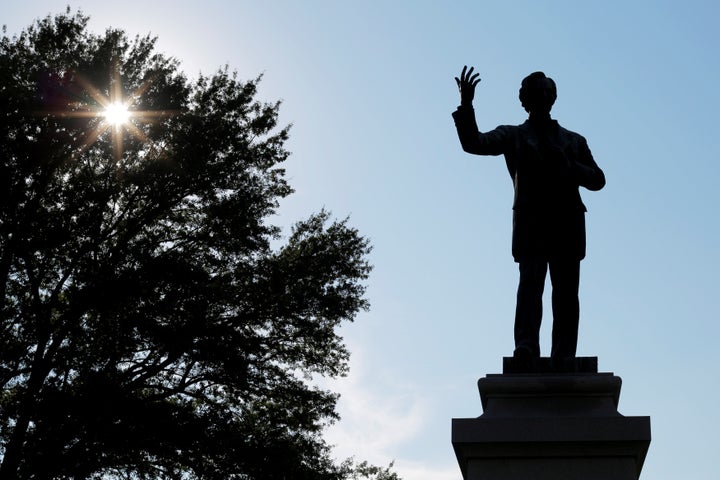
Shortly after white supremacists and white nationalists ― not just the alt-right, but some of them seeking an alt-Reich ― converged on Charlottesville, Virginia, President Trump and others began to speak for public monuments and memorials to leaders of the Confederacy. The president returned to the theme in Phoenix on August 22nd, a bit more obliquely. Principally, he and others argue that removing such monuments and memorials means abandoning or renouncing history, and that it sets a dangerous precedent that soon could topple statues of other, more favored famous people.
The president and others who echo these views are mistaken. They err on both points.
First, monuments in public spaces are rarely, if ever, choices of thoughtful historians; they are choices of city councils, county boards, and other elected officials of a particular day. They usually represent neither historical context nor narrative in any developed form, but political choices about whom and what to honor in visible places that a community shares. Typically, the historical information is little or nothing more than dates of a man’s birth and death, and one public role he filled for a time. Setting aside larger memorial sites, like the Gettysburg battlefield, that often provide greater context and detail, these monuments and memorials neither offer nor invite any of the hard work of history. They do not explore or suggest a full narrative of the time: the social and economic forces, range of people, events before and during, and other factors that together allow us to understand better the past. They do not pursue seriously or honestly the ideals of studying history, which are to let us see with clarity the present in the past and then help us to imagine the future that we might shape. Instead, they reflect time-bound political choices about what those in local power want others to see in communal spaces.
This is not to say that municipalities, states, and the nation should omit public monuments. No, they should create and place public memorials. I also acknowledge separate and important questions of art and of the possible historical significance of a sculptor or other artist, so I do not propose destruction. My point is precise. Choices of what to say and display with those monuments are contingent on political control and politicians’ prerogatives at the time, not on historical truth or inquiry. That those choices often use historical figures does not make them history.
Second, President Trump at least twice has made what lawyers call a ‘slippery slope’ argument: if we take down statues of Robert E. Lee, Stonewall Jackson, or perhaps Jefferson Davis, then soon we may have to remove George Washington and Thomas Jefferson. If today we take seemingly desirable Step A, there will be no logical stopping point and undesirable Steps B and C inevitably must follow as we slide into tomorrow.
But Donald Trump is looking at the wrong slope. The slope he actually considers, when he bemoans the disappearance of Confederate statues from 21st-century city squares, might lead us next to remove all American statues of King George III, Kaiser Wilhelm, Emperor Hirohito, Benito Mussolini, Adolf Hitler, Josef Stalin, and Osama bin Laden. This is the slope he surveys, of men who have caused us great damage and death, threatened or made war on us, or menaced the very existence of a United States of America.
If you have traveled this great nation, from its smallest villages to its largest cities, from palm trees or saguaro to tundra, and noticed none of those public monuments, it is not because you have missed them. It is because they are not here. The slope of which Mr. Trump warns is not slippery or dangerous. His words and thinking are.
(Mr. Strang lived in Charlottesville for three years while attending the University of Virginia School of Law).